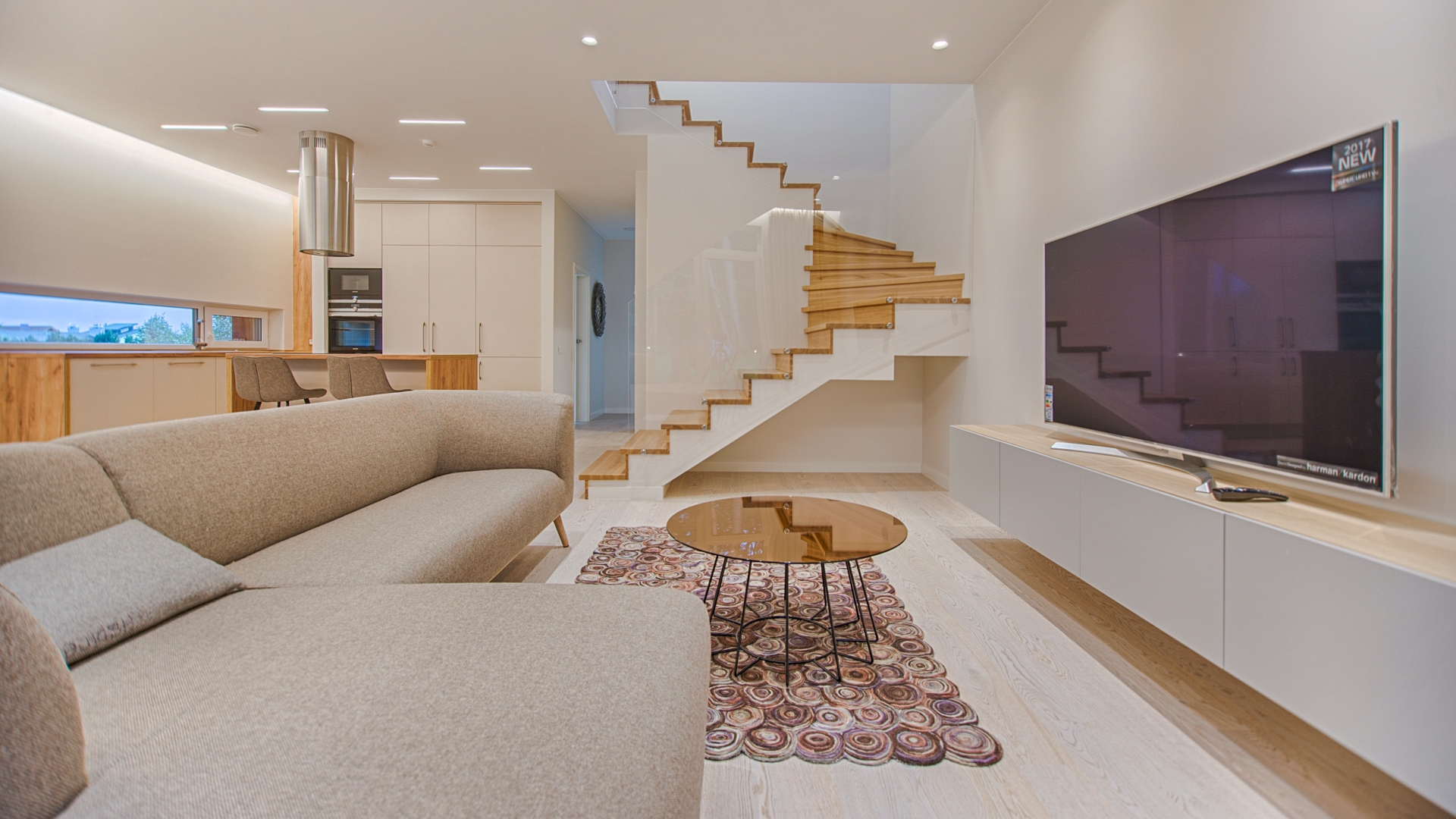Personalizing a living environment holds immense importance. It not only reflects individual style and taste but also enhances comfort and functionality. This article explores six diverse customization options, each offering unique ways to transform a living space into a personalized haven.
1. Smart Home Technology
Smart home technology stands as a powerful tool in the quest for personalized living environments. It offers enhanced comfort, convenience, and security, transforming everyday living into an experience of ease and efficiency.
Consider the integration of smart lighting. This technology allows for the adjustment of lighting levels to suit mood, activity, or time of day. It’s not just about illumination; it’s about creating an ambiance that resonates with personal preferences.
Thermostats, too, play a pivotal role in personalizing a living environment. Smart thermostats adapt to lifestyle patterns, ensuring optimal temperature settings for comfort and energy efficiency.
Security systems have also evolved, with smart technology offering advanced protection features. From remote monitoring to instant alerts, smart security systems provide peace of mind, knowing the home is safe.
One notable platform that seamlessly integrates these smart home devices is MyPlace. This system brings together various smart home technologies, providing a unified and user-friendly interface for managing a personalized living environment.
2. Color Schemes
Color is a powerful design tool that can create different moods and atmospheres within a space. For instance, lighter shades such as pastels and neutrals can make a room feel larger and more airy, while darker hues can create a sense of coziness and intimacy.
Selecting the right color scheme should be guided by the intended use of the room. Take a bedroom, for instance—it would be advantageous to use soothing shades such as blues or greens, which are known to foster a relaxing environment conducive to peaceful slumber. In contrast, a home office might benefit from more energizing colors like yellows or oranges, which can stimulate creativity and productivity.
It’s also worth considering the impact of color on perceived temperature. Warmer colors like reds, oranges, and yellows can make a room feel warmer, while cooler colors like blues and greens can make a room feel cooler. This can be particularly useful in rooms with a lot of sun or homes in warmer climates.
3. Furniture Selection
Furniture plays a crucial role in defining a space. It’s not just about providing seating or storage—the style, size, and placement of furniture can significantly impact the overall look and feel of a room.
When selecting furniture, consider the scale of the room. Oversized furniture can overwhelm a small space, while furniture that’s too small can make a large room feel cold and impersonal. It’s about finding the right balance.
Also, consider the function of the furniture. A beautiful chair might catch your eye, but if it’s uncomfortable to sit in, it won’t be a good fit for a living room or a study. Similarly, a stylish table might look great in a showroom, but if it’s not the right height for dining or working, it’s not going to be practical in a dining room or home office.
4. Lighting
Lighting plays a pivotal role in shaping a room’s atmosphere. The choice of lighting fixtures, their placement, and the intensity of light they emit can transform a room’s appearance and ambiance.
In planning a lighting scheme, consider the room’s purpose. For instance, a kitchen requires bright, shadow-free task lighting for safe food preparation. In contrast, a living room may benefit from a combination of ambient, task, and accent lighting to create a warm and welcoming environment.
Also, consider the role of natural light. Maximizing natural light can make a room feel brighter and more spacious and help reduce energy costs. However, it’s also important to have adequate window coverings to control glare and ensure privacy when needed.
5. Wall Art And Decor
Wall art and decor serve as the finishing touches that truly make a space feel like home. They offer a canvas for personal expression, reflecting individual tastes and interests.
Choosing wall art and decor is a deeply personal process. It’s about finding pieces that resonate with you, whether it’s a painting that speaks to your soul, a photograph that evokes a cherished memory, or a sculpture that intrigues your sense of curiosity.
Arranging wall art and decor is equally important. Consider the scale of the pieces in relation to the wall space and other elements in the room. Group smaller pieces together to create a gallery wall, or let a large piece stand alone as a focal point. Remember, there’s no right or wrong way to arrange wall art and decor—it’s all about creating a look that feels right to you.
6. Textiles And Fabrics
Textiles and fabrics bring a tactile dimension to a room’s decor. From rugs and curtains to throw pillows and blankets, these elements add texture and warmth, making a room feel more inviting.
When choosing textiles, consider how they will complement the overall design theme. A plush rug or velvet throw pillows can add a touch of luxury to a modern space, while a handwoven blanket or kilim rug can lend a rustic touch to a farmhouse-style room.
Coordinating textiles doesn’t mean everything has to match perfectly. Play with different patterns, textures, and colors to create a layered look. For instance, a mix of solid and patterned throw pillows can add visual interest to a sofa, while a colorful rug can liven up a neutral color scheme.
Conclusion
Personalizing a living environment is a journey of self-expression. It’s about creating a space that meets functional needs and resonates with personal style and preferences. Remember, there’s no one-size-fits-all approach to personalizing a living environment. It’s a process of exploration and experimentation. So, embrace the journey, and create a living space that reflects your personality and style.











